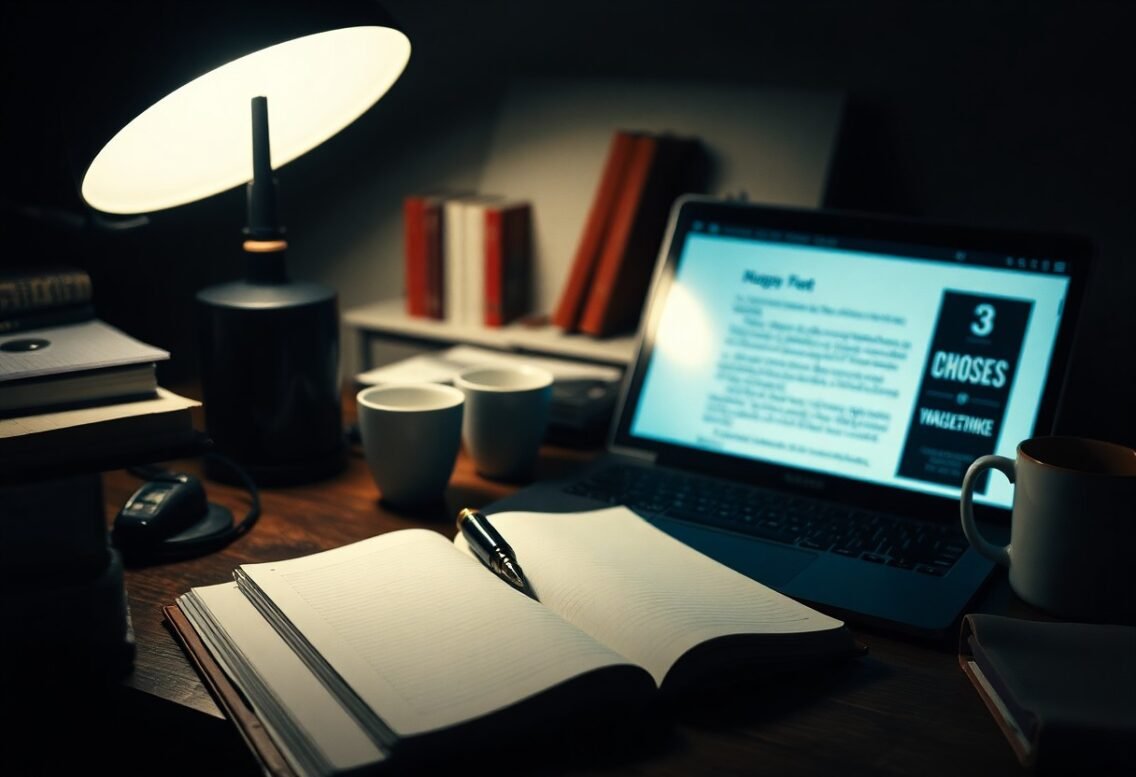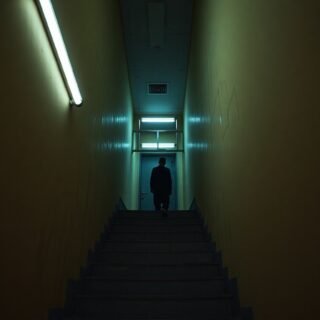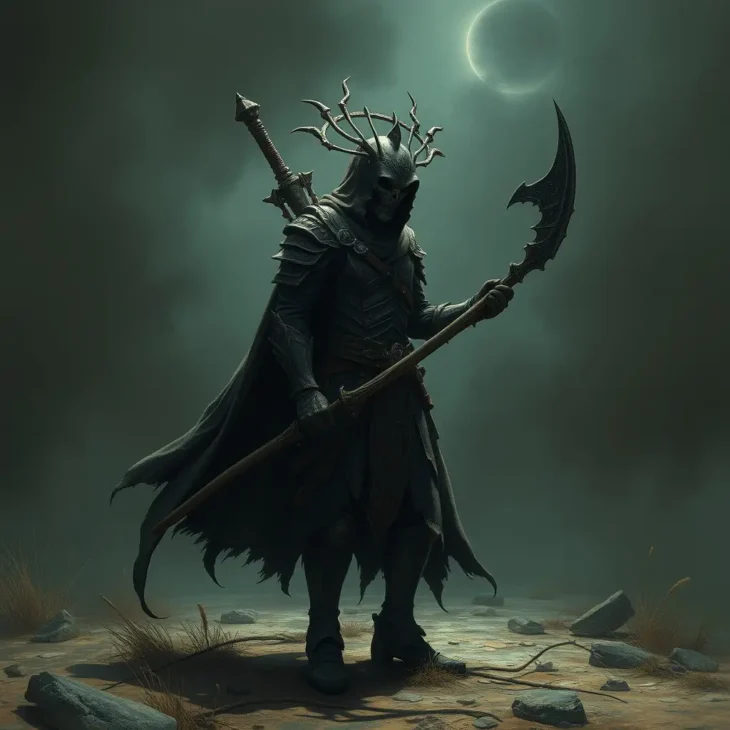Possessed Pen – A Blogger’s Writing Paralyzed at 3 AM

Awakened by an Uninvited Muse
When Inspiration Strikes
Yo, in the dead of night, six hours of tossing and turning, he thought he was done. But nah, that muse came knocking like a DJ dropping a sick beat. It’s 3 AM, and outta nowhere, they hit him with that fiery spark. One second he’s sleepin’, and the next, the words are flowing like a fresh river after a rainstorm. Poetic visions, wild concepts—they start spilling like paint from a broken can. His brain snaps awake, ready to capture the energy before it fades, knowing every syllable could change the game.
Chasing the Flow
With a ghostwriter whisperin’ in his ear, they scribble notes like it’s oral history, catching the essence of the midnight magic. They know sleep ain’t an option now. Each line is a golden nugget, a lifeline from the cosmos. It’s like the universe opened the floodgates, spilling true stories, deep feelings, and raw emotion. They look into this uncharted territory, not caring about the clock—time is the least of their worries when inspiration’s got them trapped in its emotional cyclone.
Key Takeaways:
- The struggle of writer’s block can often peak during late-night hours, with distractions and inner critics amplifying feelings of paralysis.
- Maintaining a routine and creating a conducive writing environment can help mitigate those moments of stagnation and encourage creativity.
- Exploring alternative writing strategies, such as free writing or setting small goals, can assist bloggers in overcoming obstacles and generating new ideas.
The Midnight Mental Block
She sits there, fingers hovering over keys, but all that flows is crickets. The struggle is real, and this madness strikes at 3 AM, when inspiration should be wrappin’ its arms around her. Midnight rolls in, bringing that mental block that turns her creativity into quicksand—every thought, every idea just sinking away.
Why Ideas Evaporate at 3 AM
Ideas vanish like whispers in the wind at this hour. Brain’s fried from the day’s grind, and fatigue sets in like a heavy shroud. The mind wanders into chaos, and the relentless battle against sleep makes it hard to capture that spark. Those midnight oils don’t always burn bright; instead, they flicker dangerously.
The Psychology of Sleep and Creativity
As they chase the inspiration of the late night, special brainwaves come into play. Near-sleep states spark creativity, letting thoughts dance freely, but it also makes forming coherent ideas tough. This paradox holds her creativity hostage, swinging between genius flashes and total blackout, leaving them wondering if gold could’ve been in her grasp.
During those twilight hours, the brain goes into a unique state, producing theta waves that foster creativity and intuition, yet she finds herself battling the drag of impending sleep. Studies often show that innovation thrives in this blend of drowsiness and wakefulness, but without the right focus, those creativity bursts dissolve into thin air. Instead of launching her into greatness, this psychological state sometimes breeds anxiety and frustration, making them feel locked out from their own artistry. That tug-of-war dance between dreams and wakefulness can either elevate a writer to dizzying heights or leave them stranded on the shores of doubt.
The Art of Embracing Uncertainty
If they want to uncross those jammed thoughts, embracing that all-important uncertainty can be the game changer. Creativity thrives when there’s a little chaos, a sprinkle of confusion, and they learn to dance through it like it’s a freestyle session. It’s all about letting go of the tight reins and allowing the words to flow wild and free. After all, a messy first draft can lead to groundbreaking revelations, setting the stage for a next-level finish they never saw coming.
Techniques for Navigating Writer’s Block
She might vibe with some solid techniques to slice through that paralyzed writing state. Switching up the environment, embracing short timed sprints, or even jotting down random thoughts can ignite that spark. Visualizing their writing as a flow instead of a strict path helps bust through the barriers. They pencil in those ideas without judgment, creating a space where creativity can breathe and thrive, coming alive again like a catchy hook in their favorite track.
The Role of Imperfection in Writing
Imperfection ain’t just a flaw; it’s often the secret sauce that spices up the writing game. Recognizing that rough edges and spontaneous thoughts contribute to authenticity connects the writer with their audience in a profound way. She discovers that the rawness in her words tells a story of vulnerability, allowing the reader to see the real deal behind the polished facade. Flaws become characters in the narrative, making it feel less like a script and more like a genuine life experience.
Writers tend to chase perfection, but embracing imperfection can actually bend the rules of creativity. The greatest artists often dabbled in the imperfect—like how that first draft has raw energy, telling tales that a perfectly polished piece just can’t. She finds that those awkward phrases, missed typos, and even spontaneous inspirations capture the heart and soul of their creative journey. That tiny moment of vulnerability makes for an authentic connection, making their words resonate with real emotions. When they let go of the need for everything to be flawless, they open up the canvas for something greater to unfold, showcasing the beauty that arises from the beautifully chaotic mess that is writing.
Channeling the Voices in Your Head
Late nights can bring wild, untamed musings to the forefront, and tapping into those voices can lead to dope words flowing from uninhibited minds. It’s about learning to listen intently when the ideas catch fire; those calls for expression don’t always come conveniently but can spark some of the most profound work. Igniting that creative flame amidst the darkness of night, they might just find clarity and access hidden gems lurking within their thoughts.
Strategies to Harness Inspiration in Darkness
Navigating the shadows for inspiration is all about finding rhythm in chaos. He can play his favorite tracks to amplify his vibes, where each beat unlocks fresh threads of creativity. Journaling late at night helps hone those fleeting thoughts, while word association games stir up unexpected connections. She might also try voice recording, capturing those wild whims before dawn, ensuring no brilliance slips through the cracks.
Creating a Dialogue Between Writer and Muse
The connection that builds between a writer and their muse is electric, powering the ink flowing onto pages. They can engage in a little direct chat with that inner spark, asking questions and letting their intuition reply. This dialogue feels like a rhythm, bouncing back and forth—taking personal reflections and transforming them into evocative words. She might jot down prompts based on her feelings, creating a back-and-forth that keeps her thoughts alive and vibrant, like an ongoing cypher that never stops.
This session of dialogue, where the writer respectfully asks questions while the muse responds, can guide them through the creative maze. As thoughts and insights flip between them, it deepens the understanding of their own voice. He’ll look into prompts that spark interest—“What do you want to express today?”—flipping the switch on dormant ideas and letting ’em flow uninhibited. Setting the intention for this rapport not only builds confidence but fuels the energy to tell those stories that demand to be told, leaving that midnight block behind.
The Morning After: Reflecting on the Night’s Work
As the sun peeks through the curtains, the remnants of the night’s feverish creativity linger in the air. Each keystroke from those frantic hours resonates like a beat that won’t let go. They examine their work, the raw energy turning into a kaleidoscope of emotions on the page. Morning light brings clarity, shining on the wild ideas that danced in the dark. They wonder if last night’s mania was the secret sauce to unlock something real or just a fleeting mirage.
Evaluating the Quality of Midnight Writing
With a fresh cup of coffee in hand, she revisits the verses churned out in the dead of night. There’s no denying the spark in those lines, but some parts feel like jumbled graffiti on a subway wall. Picking apart the gold from the dross, she identifies the magic that ignited creativity while eyeing the clunky bits that need a makeover.
Transforming Raw Ideas into Polished Prose
The raw vibes can be a blessing or a curse. They lay out the beats and rhythm but often lack finesse. It’s about taking the essence and layering in sophistication, ensuring the message resonates deep. She pulls out her metaphorical chisel, smoothing those rough edges and enhancing imagery until the piece transforms from mere sketch to a mesmerizing mural that speaks to the soul.
During transformation, she carefully dissects each line, evaluating where the fire still flickers and where it falls flat. Crafting imagery that pops, she utilizes vivid metaphors and strong analogies, swapping out generic phrases for ones that dance and provoke thought. Emphasizing rhythm, she adjusts punctuation and line breaks, ensuring the flow mirrors the vibes of a hip-hop beat. This process isn’t just a rewrite; it’s a rebirth, turning raw ideas into compelling narratives that invite the reader to vibe along. In hindsight, it becomes clear that those sleepless nights serve as fertile ground for inspiration, making the transformation not just a necessity but an art form.
Summing up
With this in mind, they see how the late-night grind can have ’em locked up like a pen that’s gone rogue. He’s spittin’ rhymes and ideas, but that creativity be ghosting him at 3 AM. She’s fighting the urge to break free from the possessed vibes, trying to turn that block into gold. It’s a wild ride, but one thing’s for sure: every hustler knows that even when the words don’t flow, the struggle’s real, and they keep pushin’ on, ready to conquer the next verse.
Q: What is the central theme of ‘Possessed Pen – A Blogger’s Writing Paralyzed at 3 AM’?
A: The central theme revolves around the struggles and challenges that a blogger faces during the late-night hours, particularly the haunting feeling of having a “possessed” pen that leads to writer’s block. It explores the psychological impact of creativity, the pressure to produce consistent content, and the personal battles that surface when one’s mind is overtaken by self-doubt and anxiety during the quiet hours of the night. Through vivid descriptions and relatable experiences, the narrative sheds light on the broader issue of creative paralysis that many writers encounter.
Q: What literary techniques are employed in the book to illustrate the protagonist’s experience?
A: The author employs several literary techniques, including stream-of-consciousness writing to provide readers with an intimate glimpse into the protagonist’s thoughts and emotions. Vivid imagery is utilized to depict the eeriness of the late-night setting, enhancing the sense of isolation and urgency felt by the blogger. Symbolism is also prevalent, particularly through the ‘possessed pen’ itself, representing both creative ambition and the overwhelming fear of inadequacy. By blending these techniques, the author effectively captures the tumultuous journey of seeking inspiration amidst inner turmoil.
Q: How can readers relate to the experiences shared in ‘Possessed Pen’?
A: Readers can relate to the experiences shared in ‘Possessed Pen’ by identifying with the feelings of creative blockage and the fear of sharing one’s work. Many individuals, not just writers, experience moments of doubt and anxiety when faced with the expectation to perform or create. The narrative resonates because it highlights the universal struggle of self-expression, showcasing how personal fears and societal pressures can inhibit one’s ability to produce. Moreover, the late-night context reinforces the idea that these feelings often surface in silence and solitude, experiences that many use to enhance their own creativity or productivity.





